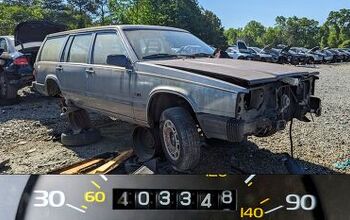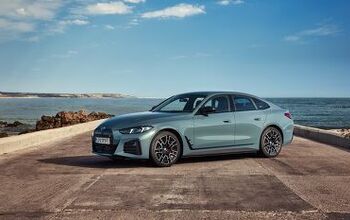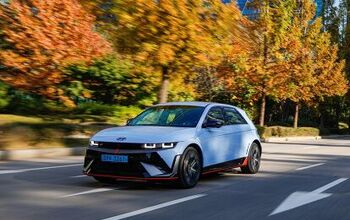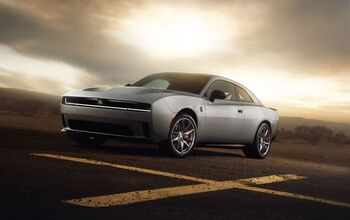Is The Chinese Car Market Showing Signs Of Slowing?
The rise of the Chinese auto market, which only surpassed the US to become the world’s largest in recent years, has drawn considerable attention from China-watchers and industry insiders alike. China’s rampant sales growth has paid huge dividends for firms who gambled on the Chinese market, in turn spurring more investment as every global automaker scrambles for access to China’s rapidly-developing market. As a result of several years of this gold rush mentality, everyone is now looking for China to stumble, to show the first signs of a bubble ready to burst.And over at Forbes, Handel Jones (the author of Chinamerica: The uneasy partnership that will change the world), thinks he may have found these first signs of slowdown in China’s auto production numbers.
Handel attributes the slowdown to three factors:
– The roads of the large cities, which represent the concentration of buying power for automobiles, are already highly congested. The fees for getting license plates in Shanghai are already over 50K yuan. One cannot imagine many more cars on the roads of Beijing, Shanghai, Guangzhou and Shenzhen. Even in the smaller cities, the traffic jams are becoming longer and longer. The potential speed of the cars is increasing, but the actual traveling speeds of cars in the large cities are slowing. It can oftentimes be faster to walk than to drive.
– Oil prices are increasing, with saturation in output from oil wells that are low-cost to operate. The oil imports of China are increasing, with increased competition for buying oil, which is resulting in prices per barrel of oil at the $112.00 level. Inflation has to be controlled, and oil and transportation costs affect many areas, including food costs.
– Cars need to be parked, and parking for cars is competing for space for people. Do car parks get built or do apartments get built?
Valid arguments, to be sure, but with Chinese car ownership still at 52 per 1,000 people, Handel’s brand of China-bear analysis remains a tough sell. On the larger level, however, the prospect of hundreds of millions of new cars taking to China’s roads has undeniable social, political, economic and environmental implications. Handel’s production data point is more likely to indicate a speedbump rather than a full-blown slowdown, but it’s never too early to consider the long-term evolution of the world’s largest car market.
More by Edward Niedermeyer
Latest Car Reviews
Read moreLatest Product Reviews
Read moreRecent Comments
- Spectator Wild to me the US sent like $100B overseas for other peoples wars while we clammer over .1% of that money being used to promote EVs in our country.
- Spectator got a pic of that 27 inch screen? That sounds massive!
- MaintenanceCosts "And with ANY car, always budget for maintenance."The question is whether you have to budget a thousand bucks (or euro) a year, or a quarter of your income.
- FreedMike The NASCAR race was a dandy. That finish…
- EBFlex It’s ironic that the typical low IQ big government simps are all over this yet we’re completely silent when oil companies took massive losses during Covid. Funny how that’s fine but profits aren’t. These people have no idea how business works.

































Comments
Join the conversation
"The rise of the Chinese auto market, which only surpassed the US to become the world’s largest in recent years, has . . ." The Chinese auto market is only "larger" because it includes vehicles that are much smaller size, lower quality, fewer luxury features, fewer safety features, smaller engine capacity, smaller cargo capacity, etc. Many are little more than golf carts with windows. The US market is still larger in terms of cubic inches, horsepower, funtional bumpers (as opposed to hollow plastic shells), square inches of tread, cubic feet of passenger/cargo space, warranty coverage, etc. As I live and drive here in China, I could go on and on. But, it's comparing apples and oranges in all the ways that affect automotive goodness.
As China develops economically I think that car ownership levels will rise to levels comparable with more developed Asian countries like Korea, Japan and Taiwan. Car ownership levels in the dense cores of major cities will undoubtedly be lower but car ownership levels in the suburbs, second tier cities and rural areas are going to rise dramatically as incomes increase. Do not forget that in the outer suburbs of big cities like Beijing and Shanghai, traffic congestion is nowhere near the levels found in the city or inner suburbs and car is often much faster than public transport for suburb to suburb trips. I fully expect that Chinese cities will see a suburbanization trend similar to Tokyo for example. In second tier cities and rural areas where public transport is inferior/non existent and traffic congestion is not a problem there is massive room for growth as incomes increase.